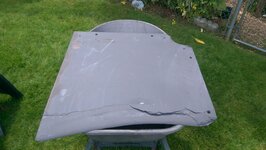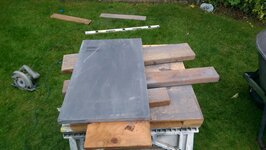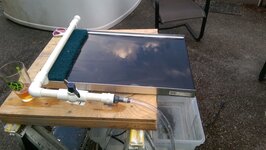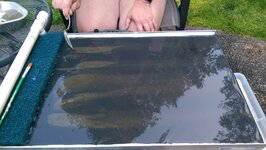Gold4Mike
Full Member
- May 10, 2017
- 230
- 718
- Detector(s) used
- Angus Mackirk Foreman
Grizzly Goldtrap Explorer
Gold Hog Piglet highbanker
Home made slate miller table
- Primary Interest:
- Prospecting
I have a friend who rebuilds pool tables. After reading about slate slabs being used for miller tables I happened to ask him if he had any slate pieces destined for the garbage bin. He did! So I scored a broken up piece of 1" thick slate. I cut it down to about 15" by 24" to eliminate cracks and other damage. I will be attempting to build my own miller table with it. I have read quite a bit and have some ideas based off of the knowledge, skills, testing, etc of many people so I think I can come up with something that works pretty well. My question is on the setting of the slate. I've read quite a few comments and threads where those using miller tables have said it is not necessary to have long surfaces, and possibly better to have a wide surface with shorter slope. I am thinking I will run my piece as 24" across the top and 15" slope rather than the other way around. I was wondering what people think and if one way would be better than the other?




Amazon Forum Fav 👍
Upvote
0



 Still more testing to do on it.
Still more testing to do on it.


 We are excited thinking about having all summer to keep practicing and getting more gold!
We are excited thinking about having all summer to keep practicing and getting more gold!





